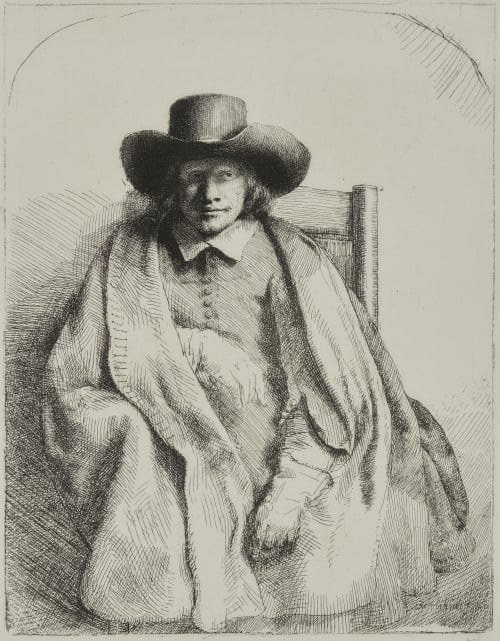
Title
Clement de JongheArtist
Rembrandt (Dutch, 1606-1669)Date
1880 plate (1651 negative)Process
PhotogravureAtelier
Amand-DurandImage Size
20.5 x 16 cm
Charles Amand-Durand (1831-1905) was a pioneer in France of making and publishing photogravure (héliogravure) reproductions of of classical etchings and engravings. He began using a heliographic process, based on Niepce’s (asphalt) method, in 1865. Georges Duplessis, the Louvre’s curator of prints, had Amand-Durand take the museum’s collection of Rembrandt material, prints and plates, and very carefully restore them by creating new heliographic plates from them. All of the prints made by Amand-Durand starting in 1865, by request from the Louvre, have on their back a red stamp. According to Duplessis, on seeing Amand-Durand’s facsimiles in 1870, …all the amateurs experienced a very natural uneasiness; they realized how easy it would be for such reproductions to deceive those among them who were inexperienced… Let them reassure themselves, however, that no proof will come from Mr. Durand’s studio without a stamp on its back, which will prevent any fraud in the future. Duplessis, was a respected print historian and an important presence in the Print Room of the Bibliothèque nationale from 1855 until retiring, as Curator, in 1897. He began collaborating with Amand-Durand in 1870. He would go on to employ Amand-Durand as, in essence if not officially, the photogravure printmaker of the Bibliothèque nationale. Amand-Durand made incredibly accomplished copies of antique prints held in the library’s collections for eleven major monographs. [1]
References
[1] Gazette des beaux-arts 2nd ser., 6.181 (July 1872)
Rembrandt Etching ‘Clement de Jonghe’ Bartsch 272 Durand Red Stamp Signed Co., Clement De Jonghe, Printseller, 1651 (Hollstein, 272 vi/vi).
Hanson, David Checklist of photomechanical processes and printing 1825-1910, 2017 p. 7
